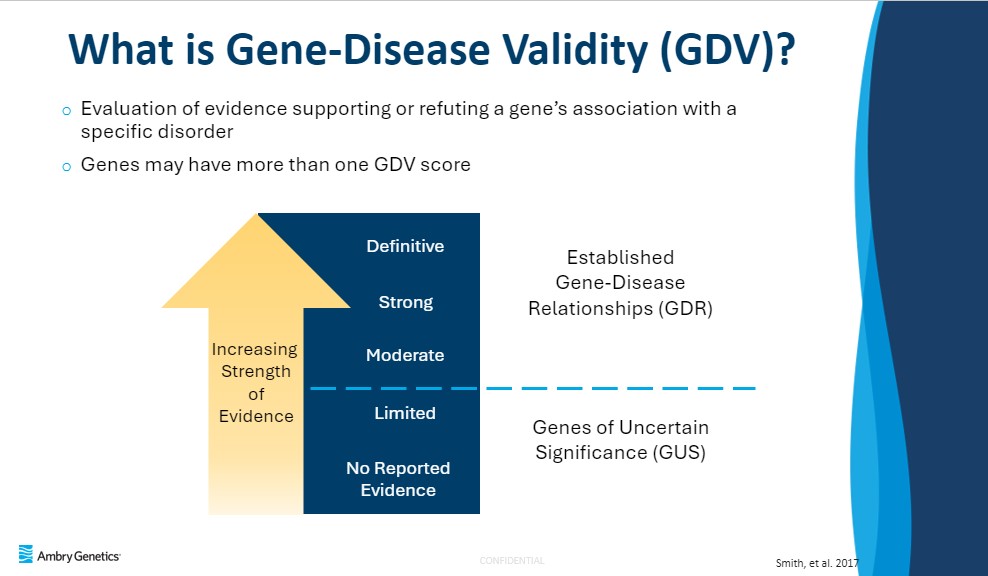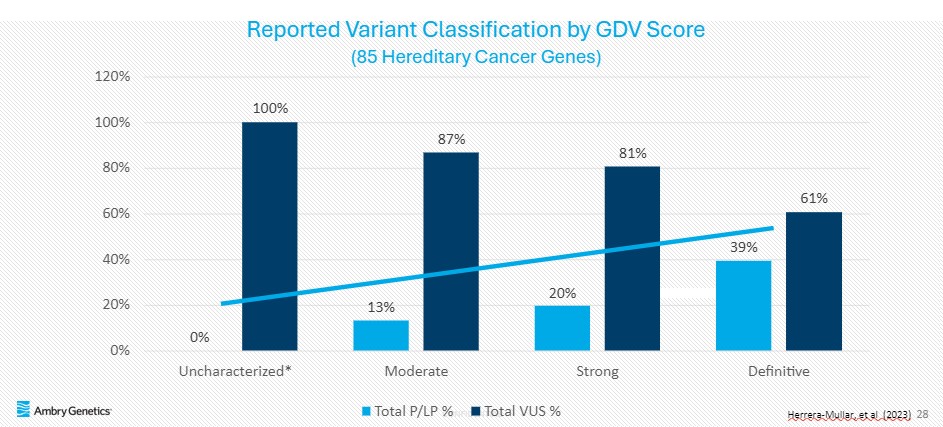In the ever-evolving field of genetics, understanding the relationship between genes and diseases is crucial for improving patient care. Gene-Disease Validity (GDV) scoring plays a pivotal role in this process, helping genetic counselors and healthcare professionals assess genetic risks and enhance medical management. As GDV scoring techniques continue to evolve, so does the clinical utility of genetic testing.
What is Gene-Disease Validity (GDV)?
GDV refers to the evaluation of evidence supporting or refuting a gene’s association with a specific disease. It is a dynamic process that requires ongoing review of both genetic and experimental evidence. Genetic evidence includes reports of specific gene variants in patients with particular phenotypes, while experimental evidence involves animal models and assays that interpret gene function in biological pathways.

The Importance of GDV Scoring
GDV scoring informs gene selection for multigene panel tests (MGPT). The validity of the selected genes affects the overall diagnostic yield and clinical utility of these tests. Genes with moderate GDV scores or higher should be considered for inclusion on MGPT (Bean et al, 2020). Conversely, genes with limited evidence should typically be excluded. Limited evidence genes lack the strength of evidence to be associated with disease. Therefore, variants identified in limited evidence genes cannot be classified above the level of Variant of Uncertain Significance (VUS). Inclusion of limited evidence genes on MGPT substantially increases the VUS rate without impacting the diagnostic yield.
Do limited evidence genes increase clinical utility of hereditary cancer panels? Ambry presented data at ASHG 2023 indicating limited evidence genes do not increase the diagnostic yield. Read more.

Evolution of GDV Frameworks
Technological advancements like Next Generation Sequencing (NGS) have enabled the discovery of vast amounts of genetic data. This necessitates standardized methods to interpret these data accurately. Since Ambry published the first GDV scoring rubric in 2017 (Smith et al, 2017), frameworks have been refined to better characterize gene-disease relationships.
Several factors have driven these updates:
1. Ongoing Discoveries: New genes and biological pathways are continually being uncovered.
2. Improved Experimental Evidence: Enhanced functional assays and population databases like Nomad provide valuable insights.
3. Advanced Study Designs: Large cohorts undergoing extensive genetic testing allow for more conclusive comparisons.
4. Gene- and Disease-Specific Characterizations: Consideration of phenotype prevalence, penetrance, and genetic heterogeneity is crucial.
At Ambry Genetics, we have also revised our GDV framework over the years. One significant change is the calibration of scoring individual variants identified in individuals with common diseases to prevent overscoring or premature characterization.
For more information on how GDV frameworks are developed and applied in a diagnostic laboratory setting, visit this Ambry blog.

Trends in GDV Scores
GDV scores can change over time as new evidence emerges. For example, the NBN gene was once thought to be associated with breast cancer, but newer data and refined scoring methods have clarified its role. A study by ClinGen in 2018 found that once genes reach a definitive status, they remain there (McGlaughorn et al, 2018). Genes in the Moderate and Strong categories tend to remain in these categories the shortest amount of time, and genes in the Limited category for more than 2 years tend to remain Limited or eventually become Disputed/Refuted.
The Future of GDV Curation
Ongoing curation is essential for informing multigene panel test (MGPT) gene selection, which directly impacts diagnostic yield and clinical utility. As we continue to refine our scoring methods and gather more evidence, we aim to maximize the clinical utility of genetic testing.
In conclusion, the evolving landscape of GDV curation is crucial for advancing our understanding of gene-disease relationships. By continually updating our frameworks and scoring methods, we can ensure that genetic testing remains a valuable tool for improving patient care.
For more in-depth discussion and specific examples, view the whole webinar here.
References:
1. Bean LJH, Funke B, Carlston CM, Gannon JL, Kantarci S, Krock BL, Zhang S, Bayrak-Toydemir P; ACMG Laboratory Quality Assurance Committee. Diagnostic gene sequencing panels: from design to report-a technical standard of the American College of Medical Genetics and Genomics (ACMG). Genet Med. 2020 Mar;22(3):453-461. doi: 10.1038/s41436-019-0666-z. Epub 2019 Nov 16. PMID: 31732716.
2. Herrera-Mullar J, Towne MC, Horton C, Weaver A, Huang JM, Thursh DL, Radtke K, Wayburn B. Do candidate genes increase clinical utility of hereditary cancer panels? When less is more. American Society of Human Genetics Annual Meeting. 2023. https://www.ambrygen.com/science/scientific-poster/301/do-candidate-genes-increase-clinical-utility-of-hereditary-cancer-panels-when-less-is-more
3. Smith ED, Radtke K, Rossi M, Shinde DN, Darabi S, El-Khechen D, Powis Z, Helbig K, Waller K, Grange DK, Tang S, Farwell Hagman KD. Classification of Genes: Standardized Clinical Validity Assessment of Gene-Disease Associations Aids Diagnostic Exome Analysis and Reclassifications. Hum Mutat. 2017 May;38(5):600-608. doi: 10.1002/humu.23183. Epub 2017 Feb 13. PMID: 28106320; PMCID: PMC5655771.
4. McGlaughon JL, Goldstein JL, Thaxton C, Hemphill SE, Berg JS. The progression of the ClinGen gene clinical validity classification over time. Hum Mutat. 2018 Nov;39(11):1494-1504. doi: 10.1002/humu.23604. PMID: 30311372; PMCID: PMC6190678.



